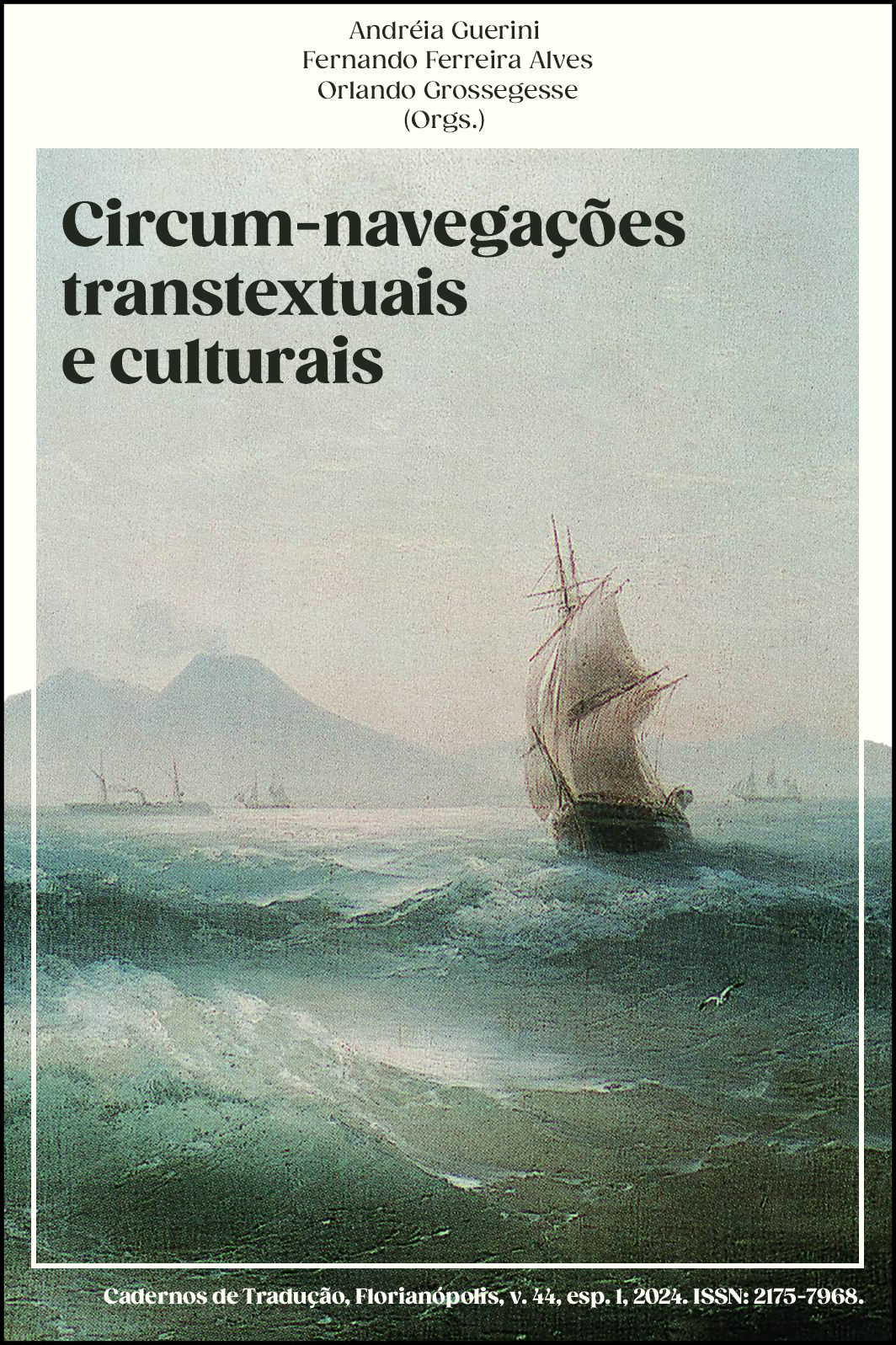Viajar da Ucrânia a Portugal com um passageiro clandestino chamado covid-19: estudo de um caso crítico em interpretação telefônica
DOI:
https://doi.org/10.5007/2175-7968.2024.e96131Palavras-chave:
interpretação telefônica, incidente crítico, pandemia, serviços públicosResumo
A concentração de pessoas em ambiente familiar e as viagens internacionais são duas das principais formas de contágio do coronavírus, responsável pela grande pandemia da nossa história recente, e foi uma mistura destes dois aceleradores da propagação do vírus que esteve na origem do caso crítico que queremos apresentar. No final de outubro de 2020, uma família ucraniana-portuguesa viu-se impossibilitada de se reunir em Portugal, quando um dos membros da família apresentou sintomas graves compatíveis com a covid-19 em território espanhol e precisou de internamento hospitalar urgente. Este acontecimento levou ao isolamento de outro dos viajantes com sintomas leves num hotel na Espanha, enquanto os restantes seguiram a sua viagem para Portugal. Nenhum dos integrantes da unidade familiar falava espanhol e foram atendidos pelo Osakidetza (Serviço de Saúde do País Basco), usando o serviço de interpretação telefônica contratado à empresa Dualia Teletraducciones, que operou nas combinações português-espanhol e ucraniano-espanhol. Neste artigo, aprofundamos a análise das conversas realizadas através de interpretação telefônica entre pacientes e enfermeiras, médicas, rastreadoras e intérpretes profissionais de português e ucraniano, com base na metodologia de estudo do Incidente Crítico (Lian, 2001; Page & Meerabeau, 2000; Perry, 1997); da hospitalização e isolamento dos membros do núcleo familiar até terem alta médica e regressarem a Portugal. Abordamos especificamente os elementos culturais, reflexos da assimetria entre os interlocutores e o impacto que estes dois blocos de elementos tiveram na transferência de informação por parte dos intérpretes telefônicos.
Referências
Bradbury‐Jones, Caroline, & Tranter, Siobhan. (2008). Inconsistent use of the critical incident technique in nursing research. Journal of Advanced Nursing, 64(4), 399–407. https://doi.org/10.1111/j.1365-2648.2008.04811.x
Diao, H. (2022). Translation in global health emergencies. Cadernos de Tradução, 42(1), 1–23. https://doi.org/10.5007/2175-7968.2022.e79605
Flanagan, John C. (1954). The critical incident technique. Psychological Bulletin, 51(4), 327–358. https://doi.org/10.1037/h0061470
Harrelson, Paul B. (2019). Deaf Employees' Perspectives on Effective American Sign Language-English Interpreting in the Workplace: An Investigation Using the Critical Incident Technique. [Dissertation]. Gallaudet University. https://ssl.gallaudet.edu/gupress/excerpts/SLITR2.pdf
Lázaro-Gutiérrez, Raquel, & Cabrera-Méndez Gabriel. (2021). How covid-19 changed telephone interpreting in Spain. The Journal of Internationalization and Localization, 8(2), 137–155. https://doi.org/10.1075/jial.21005.gut
Lázaro-Gutiérrez, Raquel, & Cabrera-Méndez, Gabriel. (2022). Hazard communication through telephone interpreters during the pandemic in Spain: the case of covid-19 tracer calls. The Translator, 28(4), 523–537. https://doi.org/10.1080/13556509.2023.2179456
Lian, Jin Xiong. (2001). Reflective practice: A critical incident. Contemporary Nurse: A Journal for the Australian Nursing Profession 10. 3–4. http://dx.doi.org/10.5172/conu.10.3-4.217
Page, Susie &, Meerabeau, Liz. (2000). Achieving change through reflective practice: closing the loop. Nurse Education Today, 20(5), 365–372. https://doi.org/10.1054/nedt.2000.0430
Perry, Lin. (1997). Critical incidents, crucial issues: insights into the working lives of registered nurses. Journal of Clinical Nursing, 6(2), 131–137. https://doi.org/10.1111/j.1365-2702.1997.tb00295.x
Sanz Larruga, J. (1999). Las competencias del Estado, Comunidades Autónomas y Corporaciones locales en materia sanitaria. Universidade da Coruña. http://hdl.handle.net/2183/10765
Schluter, Jessica, Seaton, Philippa, & Chaboyer, Wendy. (2008). Critical incident technique: a user’s guide for nurse researchers. Journal of advanced nursing, 61(1), 107–114. https://doi.org/10.1111/j.1365-2648.2007.04490.x
Twelker, Paul A. (2003). The critical incident technique: A manual for its planning and implementation. Trinity International University, Deerfield, Illinois. https://ptwelker.wordpress.com/2019/03/24/the-critical-incident-technique-a-manual-for-its-planning-and-implementation/
Downloads
Publicado
Como Citar
Edição
Seção
Licença
Copyright (c) 2024 Cadernos de Tradução

Este trabalho está licenciado sob uma licença Creative Commons Attribution 4.0 International License.
Autores têm autorização para assumir contratos adicionais separadamente, para distribuição não exclusiva da versão do trabalho publicada nesta revista (ex.: publicar em repositório institucional ou como capítulo de livro, com reconhecimento de autoria e publicação inicial nesta revista).





















































